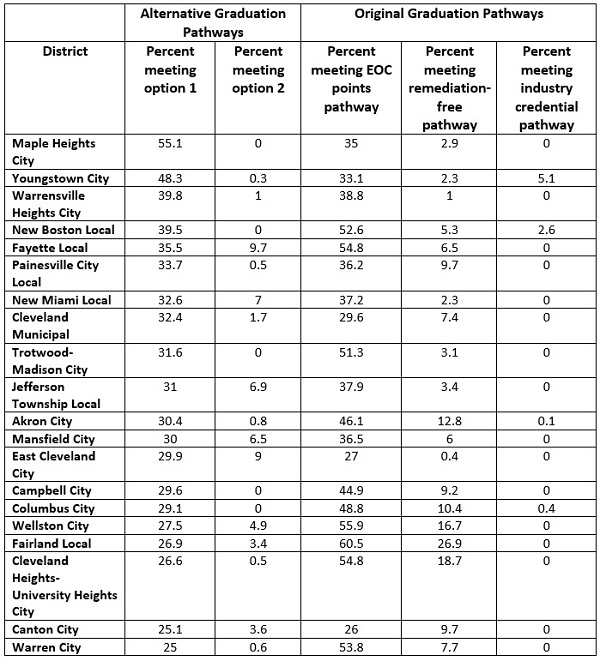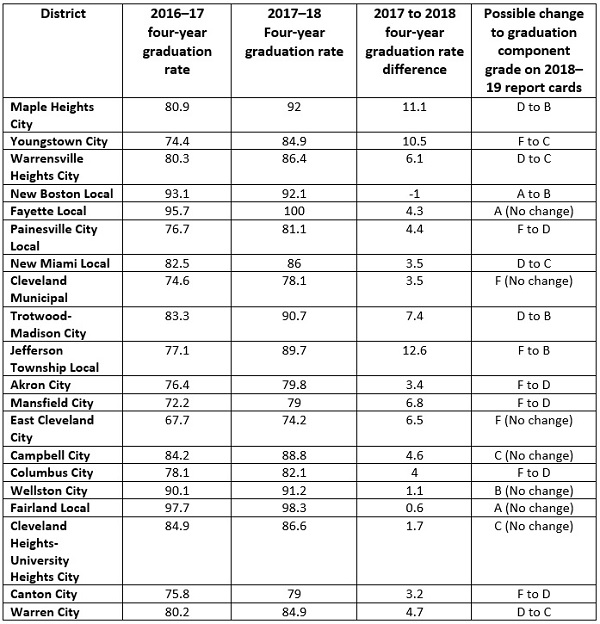Governor Mike DeWine is expected to release his biennial budget proposal next week, which will include his plan to fund education. On the campaign trail—and during his short time in office—DeWine has dropped relatively few hints about his agenda for K–12 education. Apart from pledges to increase spending on early childhood programs, there’s not much that would help us predict the details of his education budget. With that in mind, I’ll be diving into these key (albeit wonky) questions when he unveils his proposals.
Will there be changes to the school funding formula?
Under former Governor John Kasich, Ohio wisely moved away from an input-driven funding formula to a more conventional approach predicated on pupil enrollment, district wealth, and weights for children with special needs. To ensure a fair distribution of state aid, Kasich’s formula relies heavily on the “state share index” (SSI). The SSI computations take into account districts’ incomes and property values, yielding results that generally direct more aid to lower-wealth districts. Although a certain level of complexity is needed to fairly split the tab between the state and local districts, there may be some room to streamline the SSI without compromising its ability to drive money to where it’s most needed. In a preview of the much anticipated Cupp-Patterson funding report, it appears that some legislators are concerned about the intricacies of the SSI and might be open to modifications that produce a simpler, more predictable formula. Governor DeWine, however, has said little about the funding formula. It’ll be worth watching whether he proposes any tweaks to the SSI—or puts forward an entirely different distribution model.
More money for high-poverty schools...but with strings attached?
In his State of the State address, Governor DeWine promised:
We are going to direct significant state resources to Ohio’s most-in-need children to help them overcome the barriers and disadvantages of poverty and trauma...and that is why—through targeted funding in my budget—these kids will receive additional resources for mentoring, after-school programs, wrap-around services, health care, mental health care, and much, much more.
Clearly, there will be more funding for schools and other providers that serve needy children—and that’s praiseworthy. More interesting, however, will be how these targeted funds are disbursed to schools. Will it be more money-driven through the funding formula itself? For instance, there is an existing component that provides public schools with additional funds based on economically disadvantaged student enrollments. DeWine’s plan could simply boost those amounts. Another possibility is a targeted grant program that is open to high-poverty schools. But either way, DeWine seems to suggest that strings might be attached; note his remarks about specific uses for these funds like mentoring or after-school programs. If indeed there are restrictions, what might those look like? Will high-poverty districts, for example, be obligated to spend these dollars in certain ways, or will they have greater spending flexibility? And what about high-poverty charter schools?
Will funding caps and guarantees be addressed?
Rightly so, one of Governor Kasich’s school funding goals was to remove “caps and guarantees.” As a quick refresher: The cap limits the yearly growth in state funding that districts receive, while a guarantee ensures that a district doesn’t receive less in state aid compared to some prior year. Because these policies result in many districts receiving amounts that differ from the formula, the Kasich administration argued time and again that these policies gave too much money to some districts and stiffed others. Unfortunately, the administration’s efforts to remove caps and guarantees were largely unsuccessful. Both policies are difficult to unwind for various reasons: Although they are likely losing enrollments, districts on the guarantee are apt to complain about cuts to their state funding. Meanwhile, removing caps poses budgetary challenges for the state because it would cost hundreds of millions to provide full-formula funding to capped districts. Whether Governor DeWine will support eliminating caps and guarantees is unclear. But if he does, it’ll be interesting to see how his administration tries to navigate the potholes that have derailed previous attempt to scrap these policies.
Will public charter schools finally receive equitable funding?
In contrast to Governor Kasich, who once called school choice a “civil right,” Governor DeWine has been relatively quiet on the school choice front. That’s prudent given the ongoing political attacks on charters and the bruising battle to close ECOT. But DeWine has pledged to create a “more equitable funding system,” which should certainly include public charter schools just the same as school districts. Sadly, however, much work remains to fund charters equitably. As we at Fordham have documented, urban brick-and-mortar charter schools remain egregiously underfunded—receiving roughly $4,000 per student less than their nearby districts—all while delivering an arguably better education than students’ district alternatives. Will his budget rectify these massive funding shortfalls? One hopes the answer is yes.
* * *
It’s hard to know how the DeWine administration will handle important matters such as these. But if history is our guide, we can at least predict two reactions to his proposals. First, the focus will inevitably be on the “winners and losers,” without much context about why districts might receive more or less compared to prior years. Indeed, some districts may receive less state aid simply because of declining enrollments, while others, like those in Central Ohio, receive more as their student bodies swell. Second, no matter the amount of funding dedicated to K–12 education, there will be interest groups decrying that it’s not enough. To paraphrase Michael Buffer, let’s get ready to grumble.









